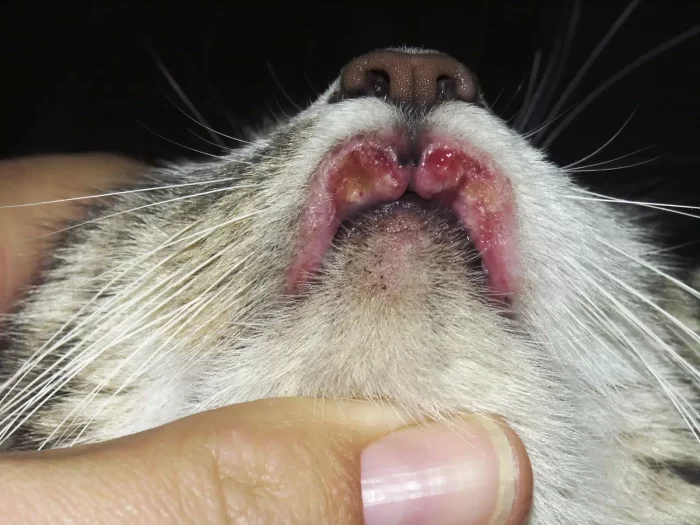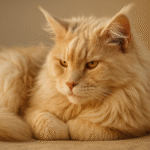This dermatopathy of cats is characterized by the unexplained appearance of red to yellow-brown ulcerated lesions with associated hair loss occurring at various locations around the body. On the average, it tends to strike female cats that are under 6 years of age.
When the raised, welldemarcated reddish ulcers appear on the lips of affected felines, they are termed eosinophilic ulcers or “rodent ulcers”. Linear granulomas are eosinophilic granulomas that can occur anywhere on the body, but usually on the back portion of the hind legs.
These ulcerations are yellowish to pink in appearance, and, as the name implies, they tend to run in a straight line down the affected portion of skin. With both eosinophilic ulcers and linear granulomas, pain and itching do not appear to be significant factors.
However, prompt treatment is still important, since some of these lesions, especially eosinophilic ulcers, can evolve to skin cancer if left alone. Eosinophilic plaques are types of eosinophilic granuloma that are associated with intense itching.
These well-demarcated, raised ulcers are often bright red in appearance and show up primarily on the abdomen and on the upper, inside portions of the back legs. Cats so affected will often lick constantly at the lesions because of the irritation and itching that they cause.
Diagnosis of eosinophilic granuloma complex in cats is routinely made on physical exam and on microscopic examination of cells or tissues from the lesions. Treatment employs corticosteroids given orally or by injection for 3 to 4 weeks.
In cases that don’t respond to standard treatment, alternate therapy such as radiation therapy may be used in an effort to bring the lesions under control. As with miliary dermatitis, antibiotics are rarely necessary to afford a cure unless a secondary infection is present.



